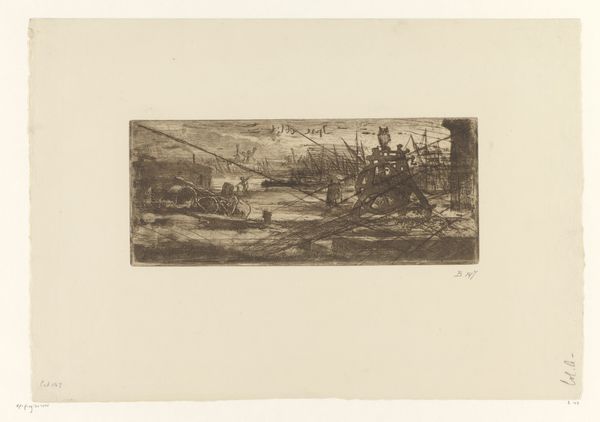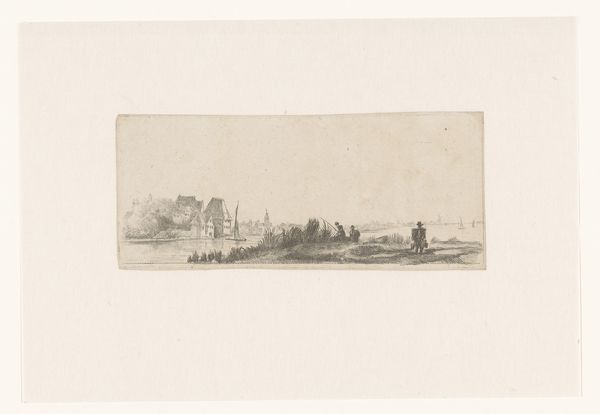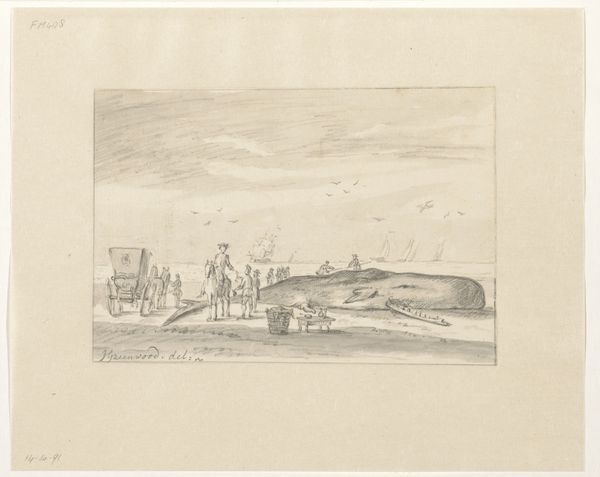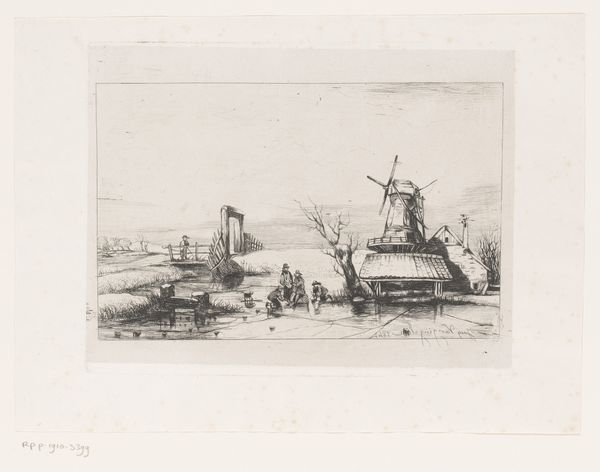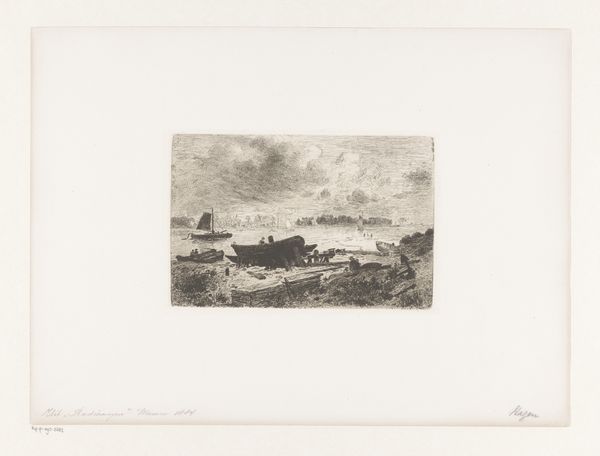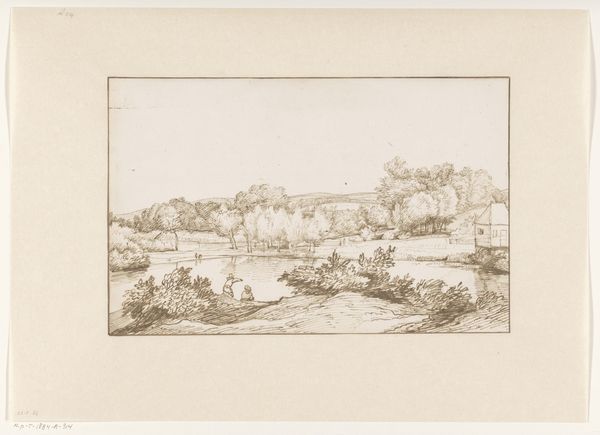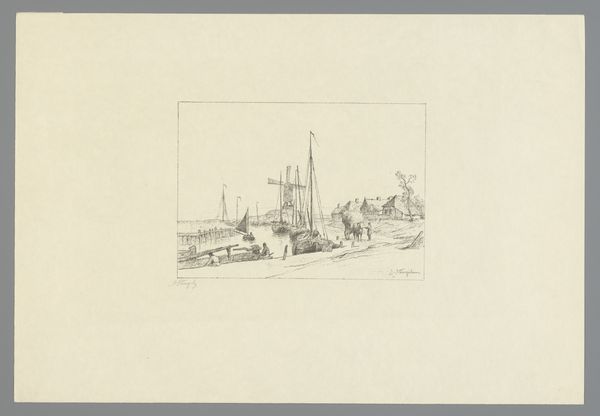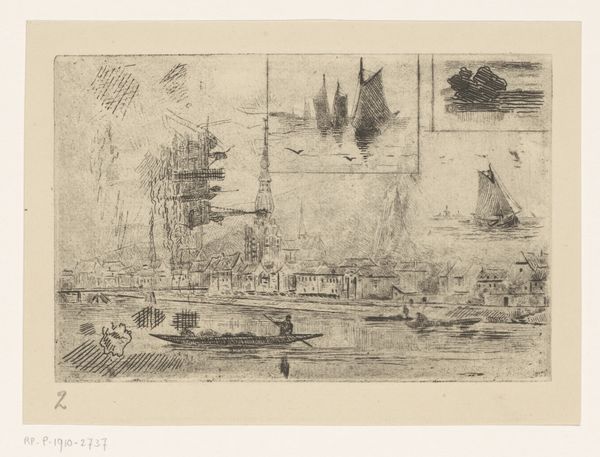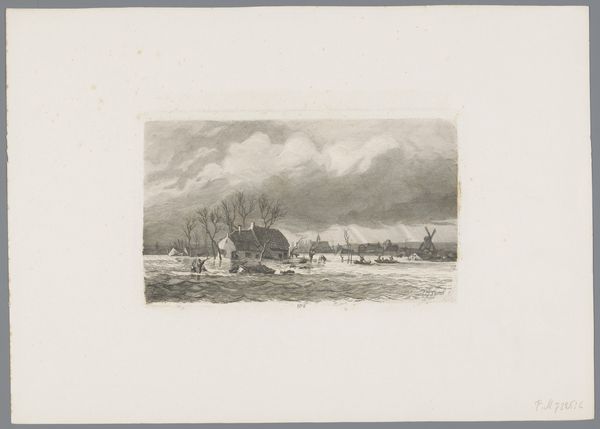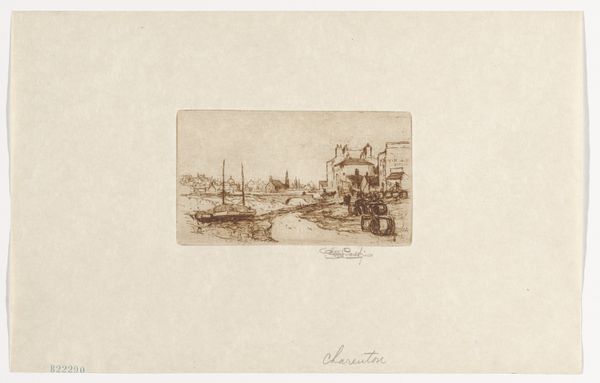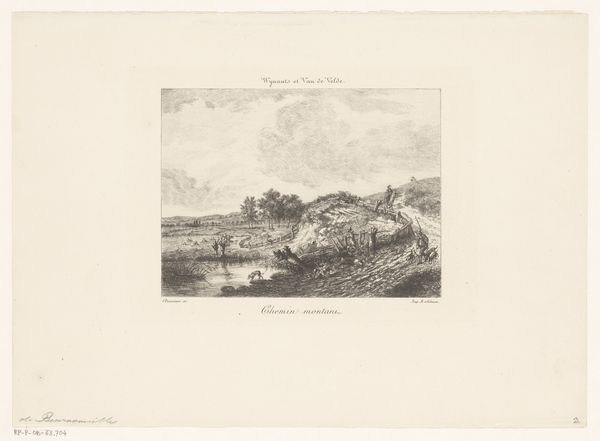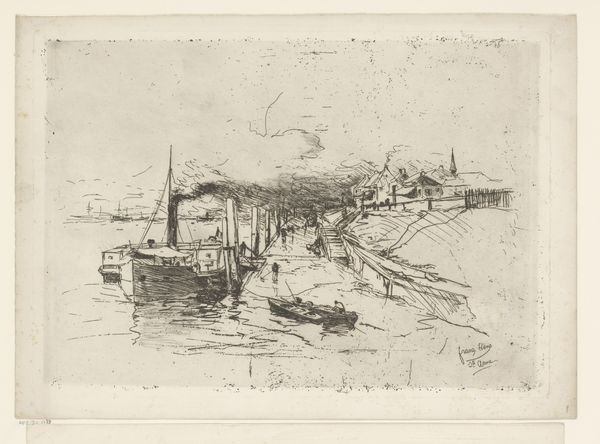
drawing, print, etching, paper
#
drawing
# print
#
impressionism
#
etching
#
landscape
#
paper
Dimensions: 135 × 225 mm (image); 158 × 240 mm (plate); 262 × 370 mm (sheet)
Copyright: Public Domain
Curator: Félix Hilaire Buhot's etching, "A Squall at Trouville," created in 1874, offers a glimpse into a blustery day at the seaside, now residing here at the Art Institute of Chicago. Editor: It's fascinating how Buhot captures that sudden change in weather. You can almost feel the wind whipping through. It makes me think of labour, a flurry of people gathering possessions, struggling against forces outside their control, not the usual idyllic leisure scenes we tend to see from the period. Curator: Precisely. Trouville, as a leisure destination for Parisians, represents a microcosm of French society during the Belle Époque. Yet Buhot disrupts this idyllic scene, highlighting the vulnerability inherent in leisure itself. The material conditions shape experience; a sudden squall and the bourgeois ideal is disrupted. Editor: And the etching technique really lends itself to this sense of impermanence. The delicate lines almost seem to dissolve before your eyes, mirroring the fleeting nature of the squall. I'm thinking of the physical labour involved: the repeated submersion of the plate into acid, a process of destruction and creation mirroring the natural phenomenon he is trying to portray. It's far removed from romantic landscape paintings. Curator: Indeed. We must consider Buhot's artistic background within broader socio-political anxieties of the period. The Franco-Prussian War had ended just a few years prior. The uncertainty and unease is captured; leisure, for whom? At what cost? This scene echoes those anxieties. Even in recreation, nature—and by extension, the artist—asserts its power. Who gets to enjoy leisure is central to the historical experience, a key commentary on societal inequalities, with different access to that leisure depending on class and gender. Editor: Exactly, and by rendering it with these raw materials, this relatively 'cheap' reproductive technology available on the art market, he broadens access and the ability to share, or disseminate, the feeling of the squall, outside those on the beach on that day. The material context informs who and where art can be shared. Curator: What this piece really achieves is that blend between art history and critical contemporary intersectionality theory to think about race, gender, and the politics of labour. Editor: By looking closely at material and processes and the way that they create meaning in the everyday we can perhaps get closer to some of those big questions you're asking. Thanks for sharing!
Comments
No comments
Be the first to comment and join the conversation on the ultimate creative platform.
